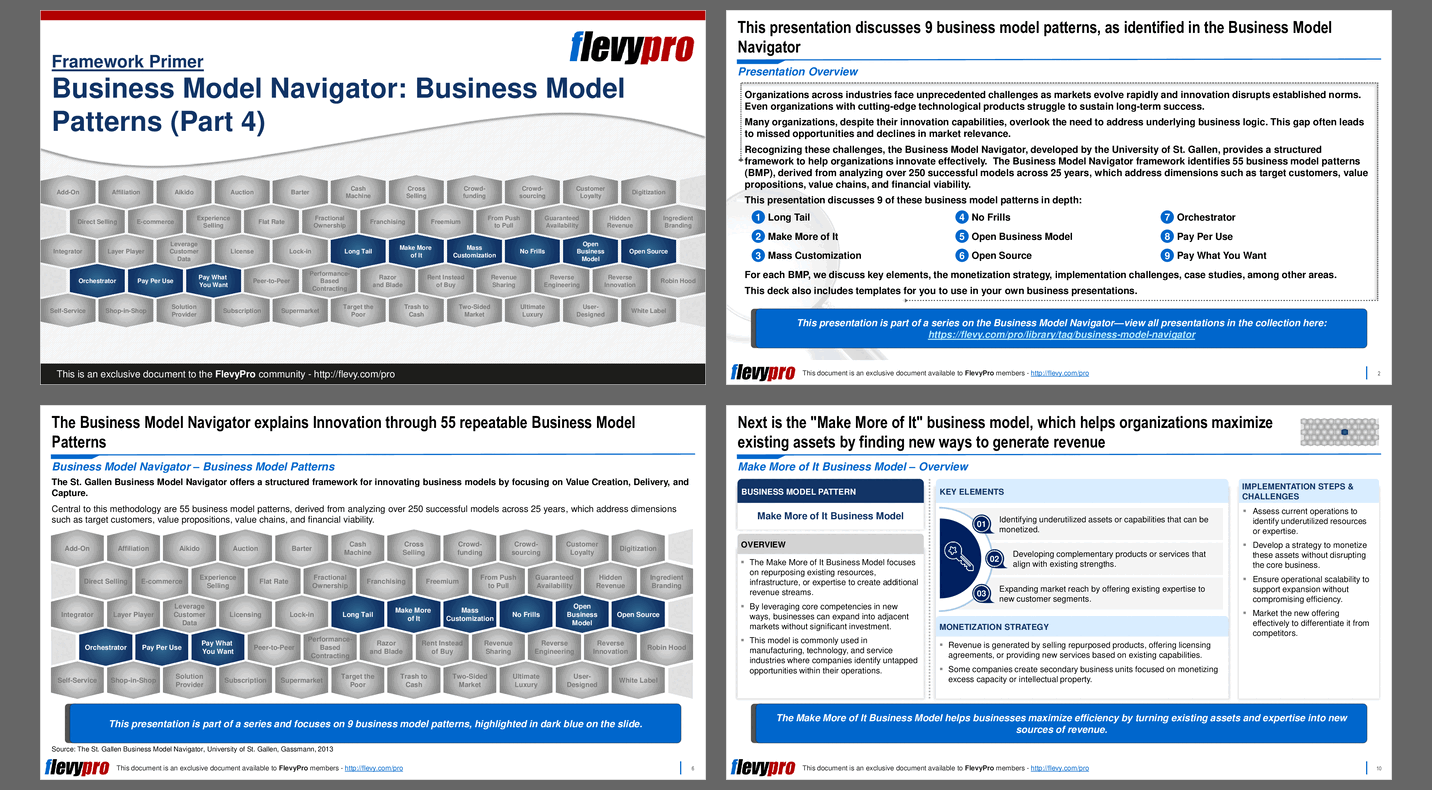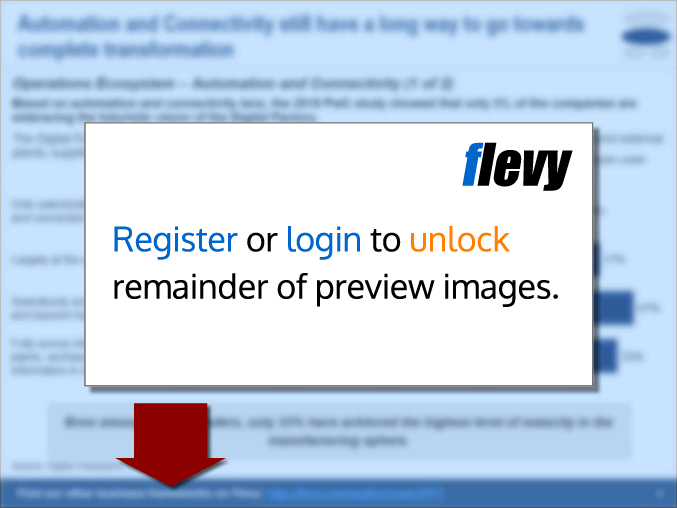Business Model Navigator: Business Model Patterns (Part 4) (PowerPoint PPTX Slide Deck)
PowerPoint (PPTX) 38 Slides FlevyPro Document
BUSINESS MODEL DESIGN PPT DESCRIPTION
Organizations across industries face unprecedented challenges as markets evolve rapidly and innovation disrupts established norms. Even organizations with cutting-edge technological products struggle to sustain long-term success.
Many organizations, despite their innovation capabilities, overlook the need to address underlying business logic. This gap often leads to missed opportunities and declines in market relevance.
Recognizing these challenges, the Business Model Navigator, developed by the University of St. Gallen, provides a structured framework to help organizations innovate effectively. The Business Model Navigator framework identifies 55 business model patterns (BMP), derived from analyzing over 250 successful models across 25 years, which address dimensions such as target customers, value propositions, value chains, and financial viability.
This PPT presentation discusses 9 of these business model patterns in depth:
1. Long Tail – The Long Tail Business Model focuses on selling a large variety of niche products instead of relying on a few bestsellers.
2. Make More of It – The Make More of It Business Model focuses on repurposing existing resources, infrastructure, or expertise to create additional revenue streams.
3. Mass Customization – The Mass Customization Business Model allows businesses to offer tailored products while maintaining the efficiency of mass production.
4. No Frills – The No Frills Business Model removes extras and focuses on delivering the essential product or service at the lowest possible cost.
5. Open Business Model – The Open Business Model fosters collaboration by leveraging external resources, knowledge, and innovations to create new business opportunities.
6. Open-Source – The Open-Source Business Model provides free access to software code, allowing developers and businesses to modify and improve the product.
7. Orchestrator – The Orchestrator Business Model enables companies to act as intermediaries, connecting different stakeholders while managing operations without owning all the resources.
8. Pay-Per-Use The Pay-Per-Use Business Model allows customers to pay only for the amount of a product or service they use, rather than a fixed price.
9. Pay What You Want – The Pay What You Want (PWYW) Business Model allows customers to choose the price they are willing to pay for a product or service, including the option to pay nothing.
For each BMP, we discuss key elements, the monetization strategy, implementation challenges, case studies, among other areas.
This deck on business model patterns also includes PPT templates for you to use in your own business presentations.
Got a question about the product? Email us at flevypro@flevy.com.
Source: Best Practices in Business Model, Business Model Navigator PowerPoint Slides: Business Model Navigator: Business Model Patterns (Part 4) PowerPoint (PPTX) Presentation Slide Deck, LearnPPT Consulting
Did you need more documents?
Consider a FlevyPro subscription from $39/month. View plans here.
For $10.00 more, you can download this document plus 2 more FlevyPro documents. That's just $13 each.







